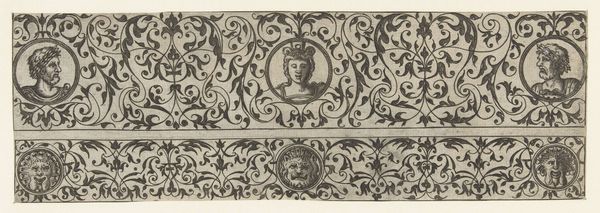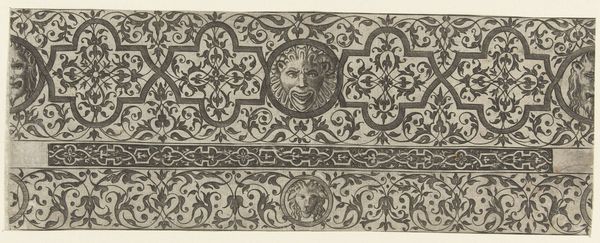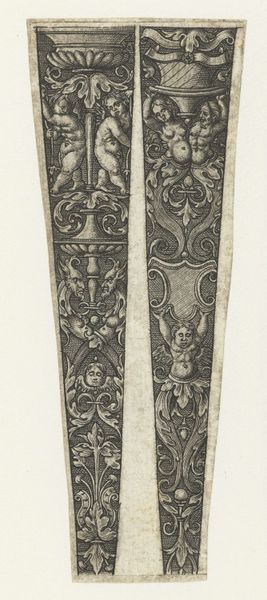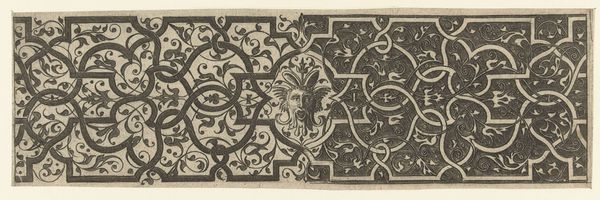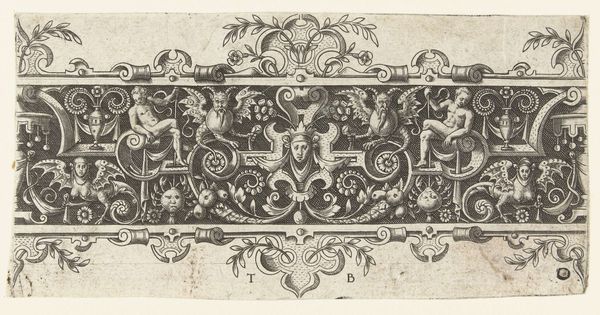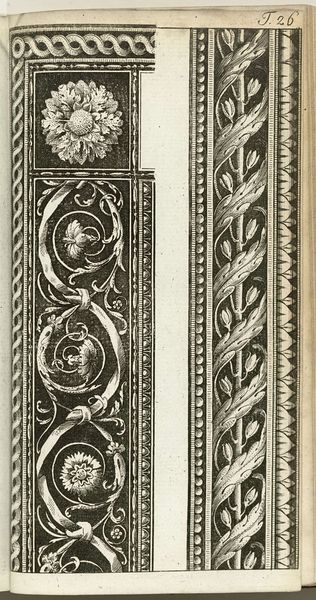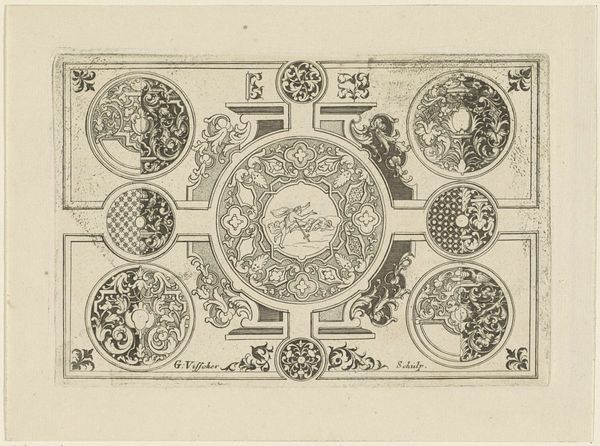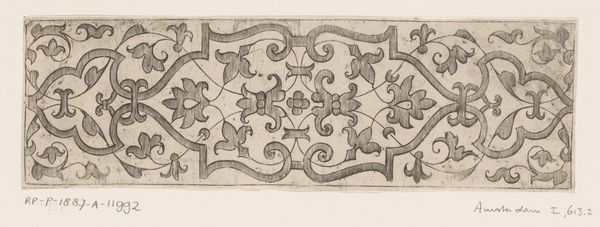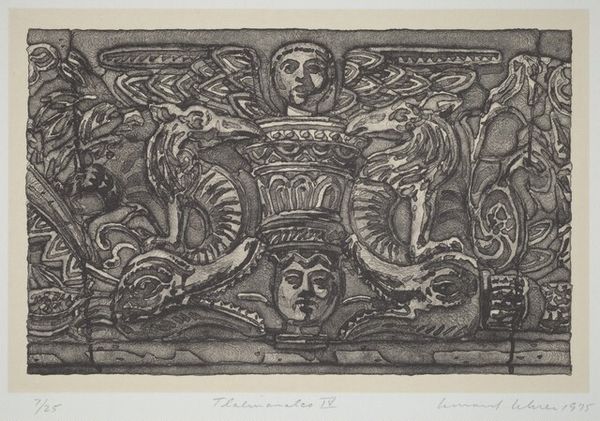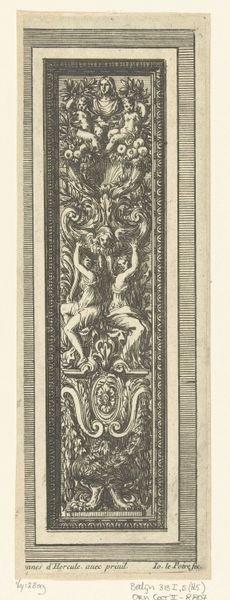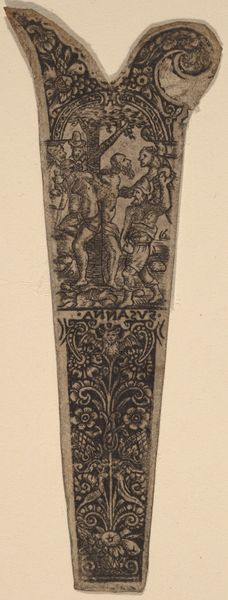
Licht gebogen fries met in het midden een mascaron, onderaan een smal fries 1550 - 1580
0:00
0:00
anonymous
Rijksmuseum
print, engraving
# print
#
old engraving style
#
crosshatching
#
form
#
11_renaissance
#
geometric
#
engraving
Dimensions: height 66 mm, width 233 mm
Copyright: Rijks Museum: Open Domain
Editor: This is an engraving called "Licht gebogen fries met in het midden een mascaron, onderaan een smal fries," created anonymously sometime between 1550 and 1580. The intricate patterns, lines, and geometric forms remind me of ironwork or textiles. How do you interpret this work? Curator: I see a piece deeply embedded in the sociopolitical dynamics of the Renaissance. It's not just decoration. Consider the geometric precision alongside the organic forms. How might that speak to the era's tensions between humanism and established power structures? Editor: I hadn't considered it in terms of tension, more as just a blending of styles. Are you suggesting the geometric represents established power? Curator: Perhaps the controlled, rational order that underpinned the societal hierarchies of the time. And the mascaron in the center, the face—does it feel empowering, or more like a decorative element caught within this structure? Where might this design have been found and what might this tell us about intended audiences and power? Editor: It feels almost neutral, not necessarily powerless but maybe passively observing. If it was architectural, it'd be high up, overlooking everything. So is the contrast here speaking to a kind of cultural performance or restriction? Curator: Precisely! The performance of power, but also the limitations placed upon individual expression. Consider who had access to art and spaces decorated in this manner in the 16th century, and whose stories weren’t being told? Where did women or people of color fit into such designs? Editor: It makes me think about how much is missing from this image, what stories it *isn't* telling. It's powerful to consider art not just for what it shows but what it actively conceals. Curator: Absolutely. And how those silences can be just as revealing, encouraging us to critically engage with the art and the values it reflects. Editor: I’ll definitely view art with a sharper eye now. There’s a lot more to art than aesthetics, right? Curator: Always! We must see these objects as remnants of political intentions, social performances, and expressions of identity.
Comments
No comments
Be the first to comment and join the conversation on the ultimate creative platform.
